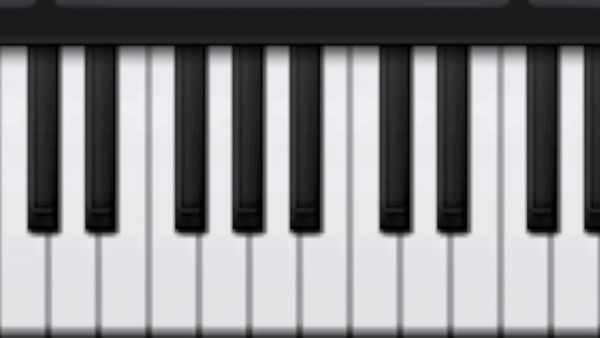If we were to pick one music concept that anchors all others, it would be the Major Scale.
A myriad of musical concepts can be derived from or explained by the Major Scale, making it one of the most important music theories to master.
What is a Scale?
A scale is a set of notes arranged in a specific and consecutive order. Once configured, the set of notes will give off a unique characteristic. Some examples of scales are, but not limited to:
- Major Scale
- Minor Scale
- Chromatic Scale
- Whole-Tone Scale
This is easily visualized on the keyboard. Here are a few examples starting from the C note:

C Major Scale 
C Minor Scale 
C Chromatic Scale 
C Whole-Tone Scale
You can see that not all scales have the same notes or the same number of notes. We also usually start and end the scale with the same note.
What is the Major Scale?
Like many other scales, the Major Scale follows a fixed configuration of notes that can be described using Tones (T) and Semitones (S).
T – T – S – T – T – T – S
If we follow this pattern and start on C as the Root Note, the C Major Scale will be
C – D – E – F – G – A – B
This pattern is the same when starting on every other note, and the reason it is called the Major Scale.
For example, let’s compare C Major and E Major.


You can see that the 2 Major Scales above follow the same pattern of T and S despite starting on and comprising different notes.
Why Master the Major Scale?
Major Scales are used to dictate the key of the song. Playing a song using the G Major key means that you will be using every note on the G Major Scale.
You want to be able to recall any Major Scale at the snap of a finger.
It is a crucial skill to have. You need to have every Major Scale committed to memory AND muscle memory to be considered a proficient musician in the music world. This includes:
- Knowing every note of every scale
- Knowing the position/degree of a note on a scale (Eg. E is the 3rd position of C Major)
- Knowing the placement of notes on your instrument
- Ability to run up and down the scale with accuracy and precision
Major Scales operates on a huge chunk of Pop and Rock Music today. Therefore, it will be beneficial to have it in your vocabulary.
How to Master the Major Scale?
For musicians with a background in Classical Music, you will know that we practice the Major Scales by running each scale up and down, taking finger placement and accuracy into account.
Refer to this PDF for all Major Scales. They have arranged the scales in the order of the Circle of Fifths.
- Start on the C with your right hand
- Following the fingering on the PDF, get used to running up and down the scale.
- Do the same with your left hand, then both hands (2 hands is the default)
- Repeat the C Major scale 2 or 3 times
- Move on to the next scale
Once experienced, you will only need to execute steps 4 and 5!
Though tedious, this is the best way to activate your muscles and get them used to the patterns.
At the start, you may find yourselves looking for the next note using the T – T – S – T – T – T – S pattern. Over time, you will search for the next note less and base the movement on instinct.
Additionally, you can increase the difficulty by:
- Adding more octaves
- Increasing the speed
- Varying to your playing (Eg. Adding Staccato, Repeating finger turning, etc.)
Naming Convention
When you start delving into Major Scales that begin on a sharp or flat note, for example, C# or G♭, you must refer to them correctly.
Remember that even though notes are enharmonic (C# = D♭), between calling the scale C# Major Scale and D♭ Major Scale, the correct answer is D♭ Major Scale.
Consistency is important in music theory. The following rules must be adhered to when naming notes in a Major Scale:
- Notes cannot be repeated or skipped
- All notes must be notated with only # or ♭
When you call the scale C# Major, all notes must be notated in #, and vice versa. Here are the notes of the scale when the scale is called C# Major:
C# – D# – F – F# – G# – A# – C – C#
You can see repeated notes like F, while E and B are skipped.
Here are the notes of the scale when the scale is called Db Major:
D♭ – E♭ – F – G♭ – A♭ – B♭ – C – D♭
Take note of this when exploring other Major Scales that begin on a # or ♭.
Conclusion
The Major Scale is one concept you cannot escape when diving into music. Having all Major Scales at your fingertips will give you an easier time when learning and playing songs. It will definitely make you an expertise in the different keys you will face in the future
